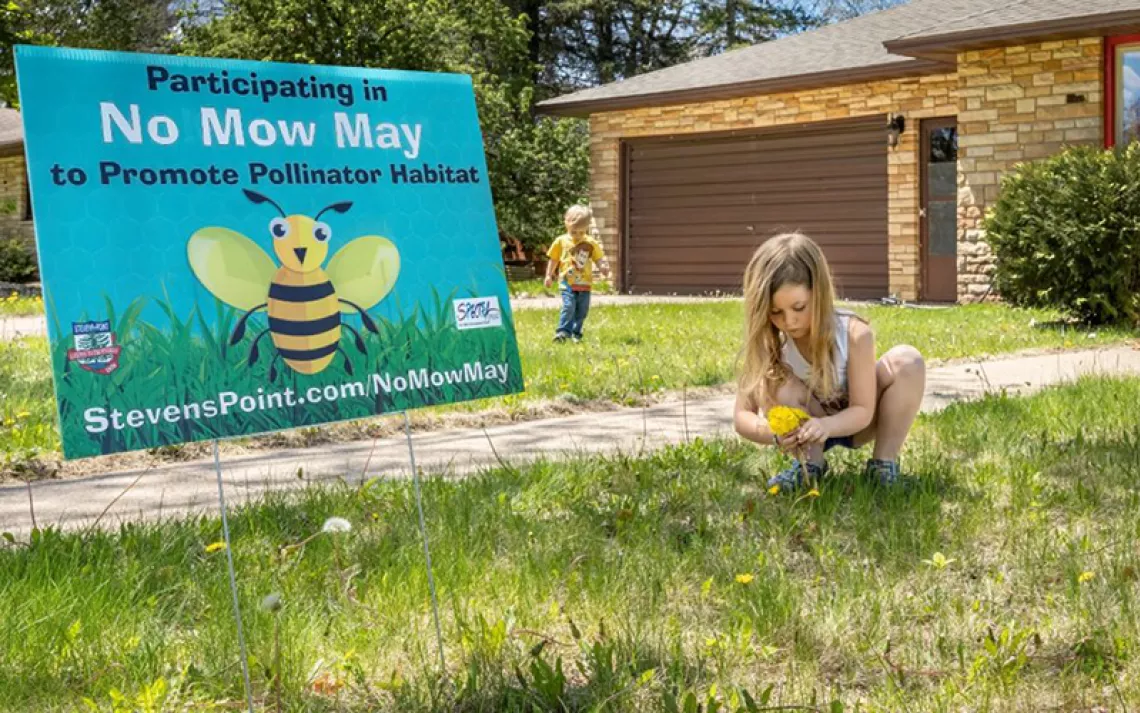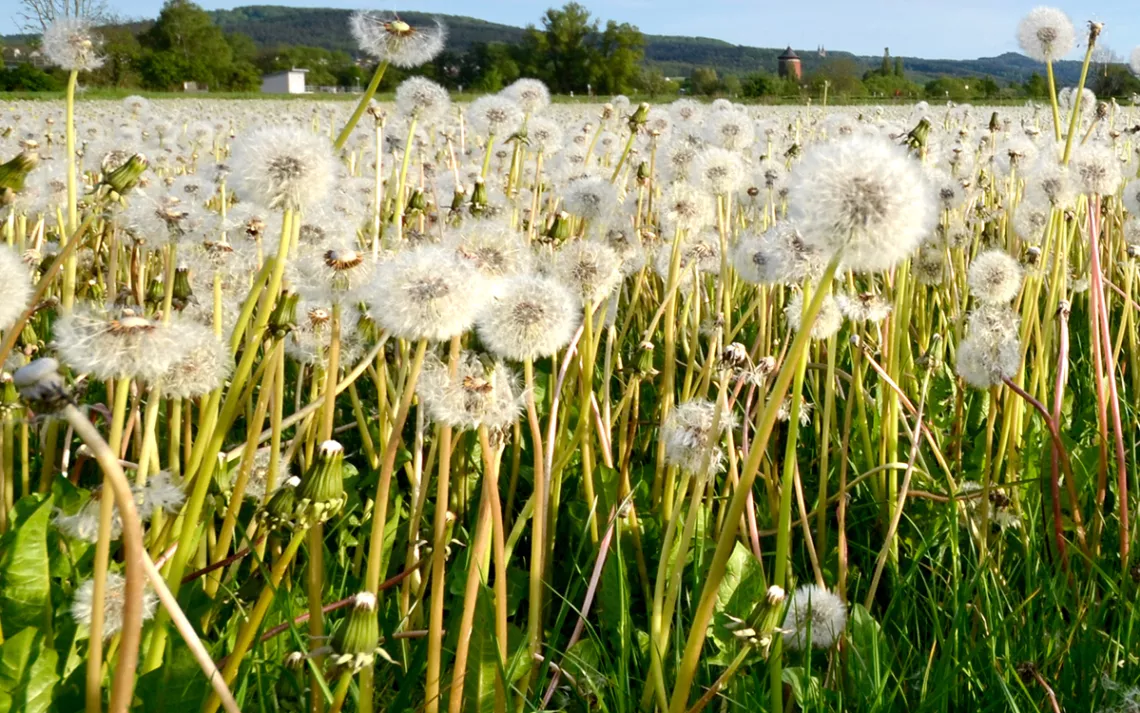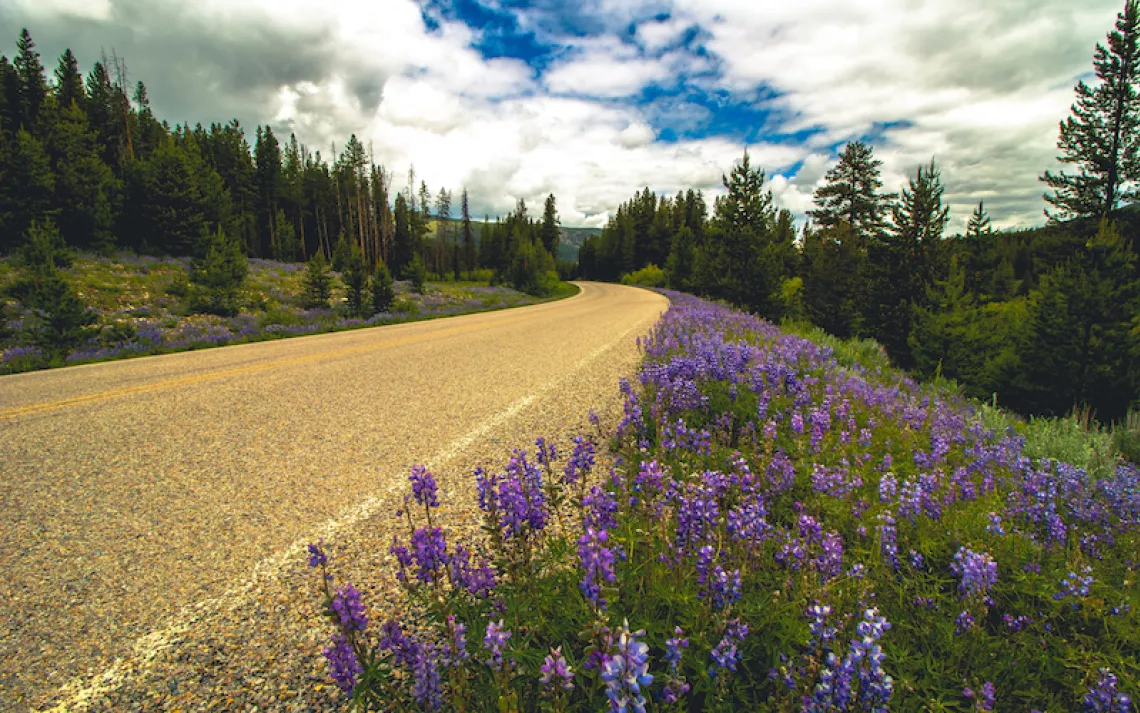All the Life Thriving Among the Dead
Storied cemeteries strive to improve their biodiversity and climate impacts
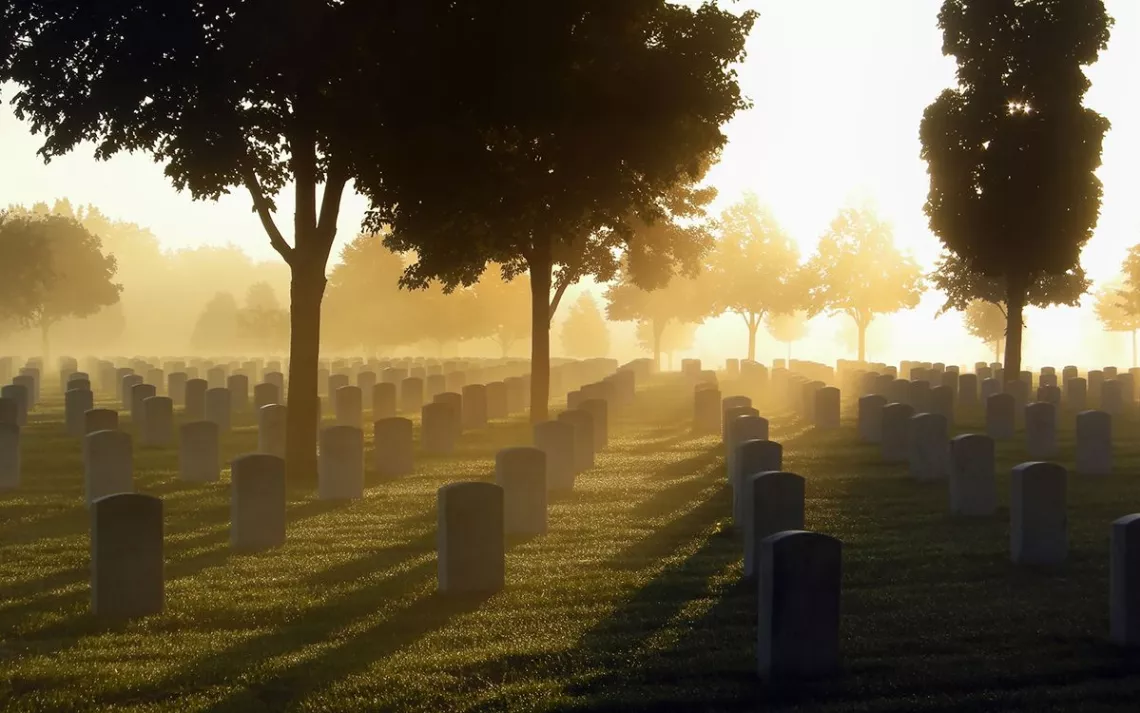
Above photo by kaleigh/iStock. Photos below by Ada Cowan.
Once upon a time, in early-19th-century America, people didn’t frequent parks; they recreated at cemeteries. Thanks to the so-called rural cemetery movement, expansive “groves of the dead” were filled with curated collections of flowering bushes and magnificent trees. Sprawling across hundreds of acres just outside cities, they were designed as naturalistic oases to simultaneously help strolling urbanites commune with dearly departeds and connect with their lost country roots.
Even today, visitors to the first of America’s rural cemeteries—Mount Auburn near Boston (built in 1831), Laurel Hill in Philadelphia (1836), and Green-Wood in Brooklyn (1838)—can find respite, shade, robins perched rotundly on headstones, and Edward Gorey-esque panoramas that don’t quite jibe with contemporary notions of either greenspaces or graveyards. These cemeteries also offer another bona fide—species diversity. As our planet loses ever more forest and grassland to development and industrial agriculture, cemeteries, along with oddball land parcels like highway median strips and churchyards, become increasingly vital. Even “regular” cemeteries offer flora to shelter myriad creatures, platforms from which to scout for food, and nooks for cavity nesters.
A 2001 study published in Conservation Biology confirmed that old cemeteries preserve general biotic diversity, while a German study from 2020 showed they could sustain a range of wild pollinators. But ecologists at rural cemeteries have long recognized the connection. As a result, says Mount Auburn’s director of urban ecology and sustainability Paul Kwiatkowski, they’ve been actively “striving to protect and improve habitat for wildlife” in these spaces for years. That’s good news for insects and the birds that eat them. And also for bats, turtles, salamanders, frogs, and fish, many of which are threatened or endangered.
“Slowly but surely we’re getting people to realize that cemeteries, while certainly places for contemplation and commemorating a loved one, in some cases are the largest green spaces in urban areas,” says Kwiatkowski. “It’s provided us the opportunity to reinvent the idea of what a cemetery can be and to look at ourselves as a living lab.”
To that end, here are some endeavors currently underway in the world of rural cemeteries.
Rebuilding Deciduous Forest
On a blazing summer morning, horticulturist Gregg Tepper and arborist Aaron Greenberg stand in a meadow along the northwestern edge of West Laurel Hill, Laurel Hill’s 200-acre addition, built in 1869. Bumblebees and cabbage-white butterflies dart through switchgrass to land among bright senna, wild bergamot, and echinacea blossoms. Avian visitors—kinglets, thrushes, goldfinches—are common here.
A work in progress, the meadow is the first in a series of successive plantings being rolled out over the next several years. Some woody shrubs have already gone in and will be followed by small white oaks, eastern red cedars, and bigtooth aspens. Of course, they’ll grow into larger trees until, some 100 years hence, this plot will have evolved into a deciduous forest. “It’s what every [parcel of land] on the East Coast wants to be,” says Greenberg. Such successions provide what he calls a “cascading effect” of food, habitat, and nesting areas for an ever-growing roster of animals.
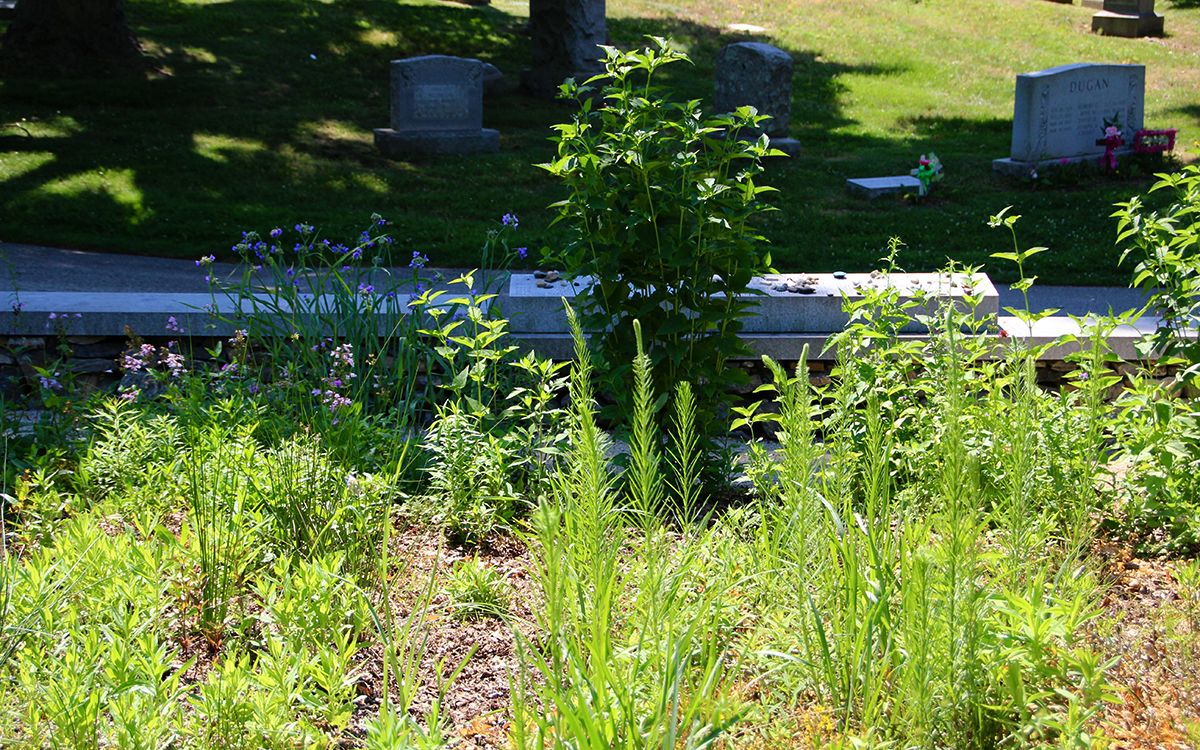 The meadow is the site of Nature’s Sanctuary, West Laurel Hill’s green burial ground (pictured, right). Once a weedy fringe filled with invasive plants, it’s now the final resting place for people who specifically sought an eco-friendly burial option: no casket, no embalming, no chemicals used to maintain the land, no mowing. As such, the space presents all sorts of opportunities for improving sustainability at the cemetery. Tepper has slowly but methodically begun controlling the mugwort and porcelain berry by planting horsetail and false indigo to outcompete them. “It’s all about knowing which plants do well with each other,” he says.
The meadow is the site of Nature’s Sanctuary, West Laurel Hill’s green burial ground (pictured, right). Once a weedy fringe filled with invasive plants, it’s now the final resting place for people who specifically sought an eco-friendly burial option: no casket, no embalming, no chemicals used to maintain the land, no mowing. As such, the space presents all sorts of opportunities for improving sustainability at the cemetery. Tepper has slowly but methodically begun controlling the mugwort and porcelain berry by planting horsetail and false indigo to outcompete them. “It’s all about knowing which plants do well with each other,” he says.
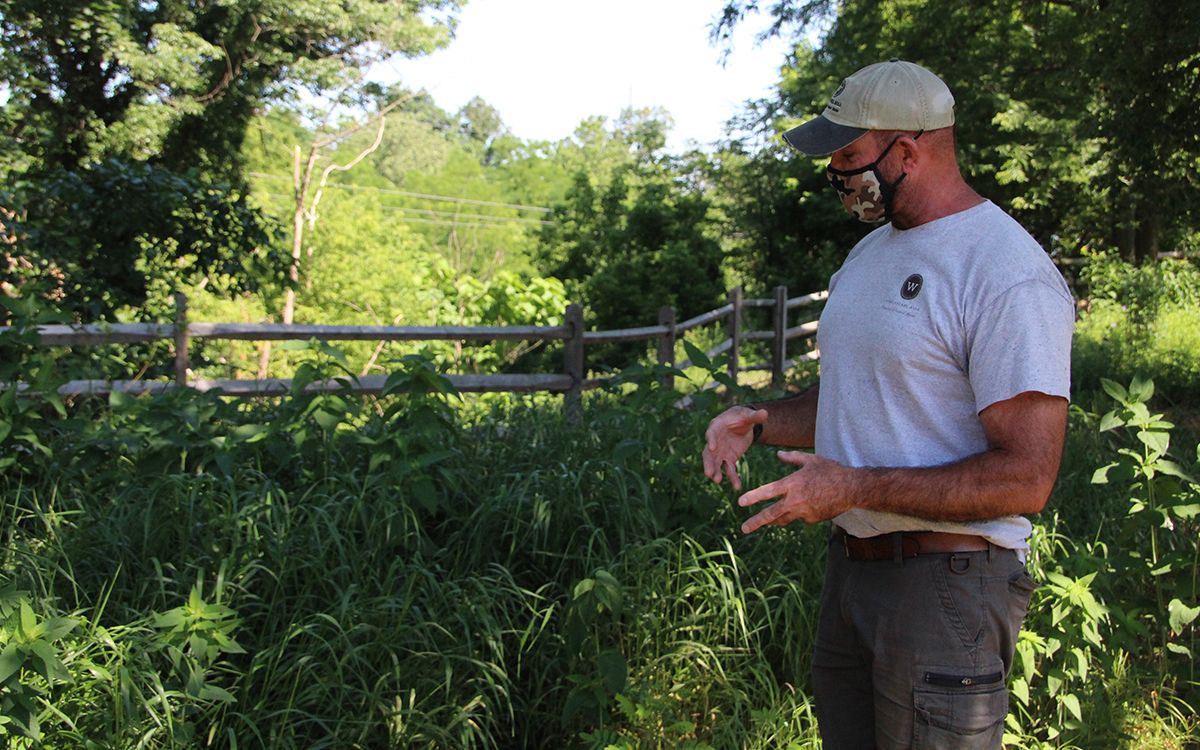 Instead of using glyphosate to hasten the weeds’ demise, he’s switched to a mix of vinegar and orange oil, which doesn’t contaminate the groundwater (in fact, this mix is now being used across both cemetery sites) or poison wildlife. He’s also building soil health with leaf litter to keep things cool and moist, and with groundcover like rose vervain, winecup, and the evocatively named bitter sneezeweed. Figuring out what will thrive in Nature’s Sanctuary, not only now but into the future, as the East Coast becomes warmer, drier, stormier, “takes a lot of resources initially,” says Tepper (pictured, right). “But once you get there, it’s habitat.”
Instead of using glyphosate to hasten the weeds’ demise, he’s switched to a mix of vinegar and orange oil, which doesn’t contaminate the groundwater (in fact, this mix is now being used across both cemetery sites) or poison wildlife. He’s also building soil health with leaf litter to keep things cool and moist, and with groundcover like rose vervain, winecup, and the evocatively named bitter sneezeweed. Figuring out what will thrive in Nature’s Sanctuary, not only now but into the future, as the East Coast becomes warmer, drier, stormier, “takes a lot of resources initially,” says Tepper (pictured, right). “But once you get there, it’s habitat.”
Making Meadow
Brooklyn’s Green-Wood has been working on ecological restoration for a number of years. Cemetery personnel conducted 43 baseline surveys between 2016 and 2018, recording 77 species of bees and wasps, 66 species of moths, and 129 species of birds, including the endangered peregrine falcon. Then there’s three species of turtles, and six bat species, including the little and big brown bats, populations of which have been ravaged nationally by white-nose syndrome.
Providing care for the cemetery’s 300 very old, “veteran” trees, which store a lot of carbon and provide a lot of habitat—in short, “giving the heaviest lift of environmental benefits,” says director of horticulture Joseph Charap—has been a priority. So has improving connectivity between wooded areas, so as to afford species greater access to resources; restoring pond areas to better support native plants, ducks, turtles and to discourage invasives; and rendering the cemetery’s 478 acres more inviting to migrant and nesting birds. But one of Green-Wood’s more ambitious undertakings is managing its grasses more like meadows.
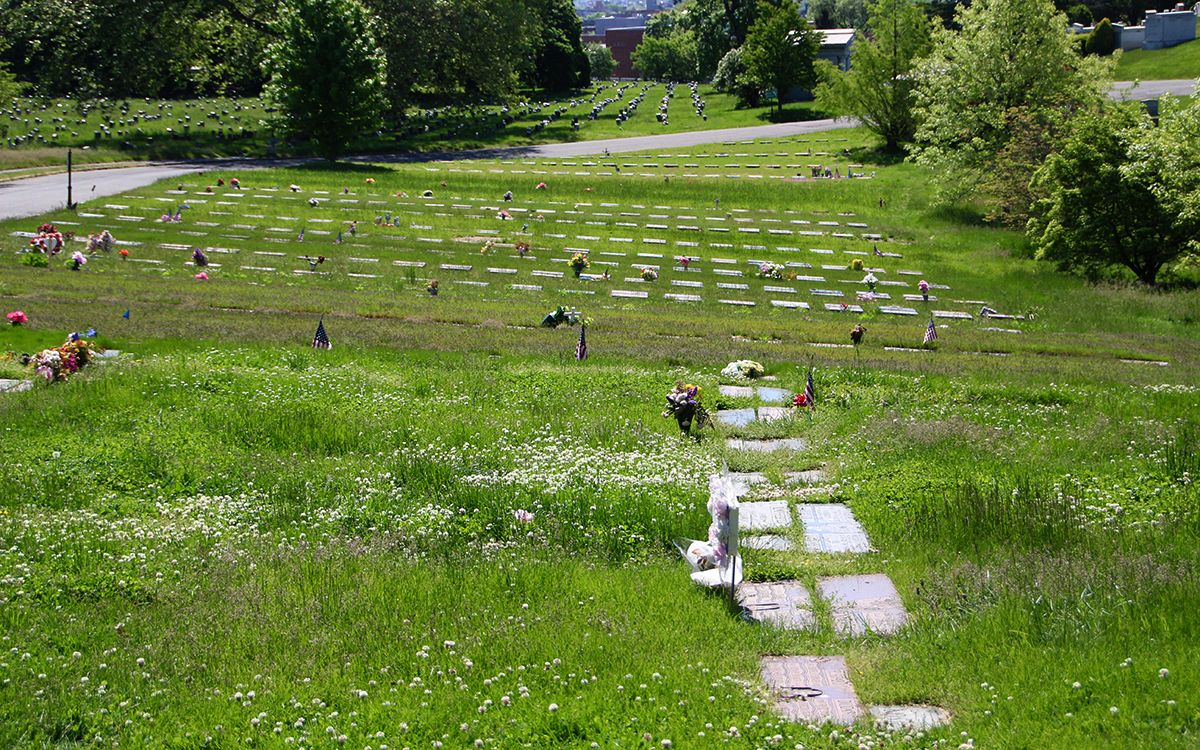
A cemetery’s ubiquitous lawn, of course, requires the use of fossil fuels to mow it. In addition to emitting greenhouse gases, mowing destroys the habitat of ground-nesting insects and birds, and drives away many species with its noise and fumes; it also requires abundant water and chemicals to keep it looking green and tidy. But as of this writing, 12 percent of Green-Wood’s grassland acreage is being mowed a mere three times a year. The remainder has gone from weekly mowings to mowings every 13 days. “When we stop mowing, native prairie grasses come up, with seeds possibly dropped by birds, and other flora come in,” says Cornell University horticulture professor Frank Rossi, who’s partnered with Green-Wood on this project.
Groundskeepers have also switched from cutting grasses down to two inches to cutting them down to five inches. This allows the flowers of lower-growing plants to remain available to foragers—all as part of Green-Wood’s return, says Charap, “to our roots as a rural cemetery. We recognize the importance of this space as a counterpoint to urbanization, and want to leverage it for conservation preservation.”
A Space for Salamanders
Green-Wood, Laurel Hill, and Mount Auburn are all accredited arboreta, and all have been working assiduously to plant more, and more resilient, trees. Like West Laurel Hill, Mount Auburn offers green burials. Like Green-Wood, it conducted an extensive series of species surveys before devising its own (equally extensive) wildlife action plan back in 2015—consulting a wide range of experts, from ecologists and hydrologists, to environmental engineers and landscape designers, to ornithologists and herpetologists. And also like Green-Wood, it’s seeking alternative grass-management strategies across its 174 acres, and improving its ponds and wildlife corridors, as a means to support its ample bird, bat, insect, and mammal populations.
Where Mount Auburn has a unique focus is in boosting habitat for amphibians. The cemetery is home to one of the few remaining Massachusetts populations of the rare spotted salamander. American toads, grey tree frogs, and spring peepers were also “most likely here at one point, but with the [cemetery’s] manipulated landscape, combined with heavy pesticide use before people understood what they were throwing on the ground—that probably impacted those populations,” says Kwiatkowski. The wildlife action plan called for reintroducing breeding populations of these species, which meant first developing adequate habitat on cemetery grounds to support them in their egg-tadpole, metamorph-juvenile, and adult stages. And today, they’re all present and holding steady.
The cemetery is actively monitoring and assessing these populations in the hopes that their (so far) success at species reintroduction can be replicated elsewhere. To this end, some of Mount Auburn’s tadpoles have been transferred to the Friends of Alewife Reservation in nearby Cambridge. Mount Auburn has also opened its monitoring to citizen science opportunities and school partnerships. Explains Kwiatkowski, “We have an overarching desire to educate the public about a warming climate and to get them ready for the changes that are coming around the bend. If we can get young people interested and invested, hopefully in the future they’ll think that wildlife is worth protecting.”
 The Magazine of The Sierra Club
The Magazine of The Sierra Club
